Text
Dual AF-On Buttons - Hear Me Out
Recently I was invited to attend Sony Kando in Sun Valley, Idaho. In addition to the all of the opportunities available at an industry gathering like this, a select group of us had a session with Sony engineers to discuss our thoughts on current and upcoming products. This included camera bodies, lenses, software and apps.
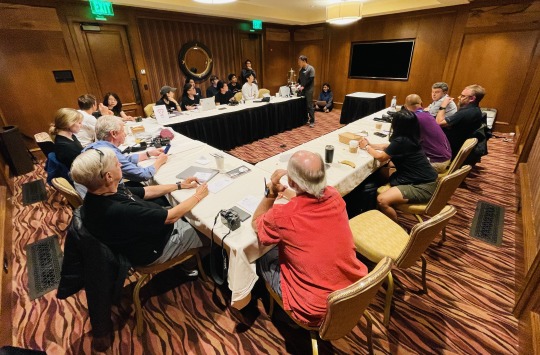
Above: The productive meeting with Sony engineers at Kando
I found the session very productive and other industry pros had some intriguing suggestions. Grateful to have been invited. Sony will listen, evaluate, and implement as many of these suggestions as they can. This is what really makes them truly unique.

This ^
I threw a bit of a wrench into the discussion for everyone, not just the engineers. I asked for dual AF-On buttons. In addition to this I asked for pinpoint AF capability. The latter has requested by many but It was important to reiterate the need. Here's why (eventually):
The Sony A1 and A9II cameras are my workhorse sports bodies. They do an amazing job in almost all circumstances. I shoot a ton of winter sports where typically athlete faces and heads are covered in some manner - helmets, goggles, masks, hoods, toques, cages, sunglasses and the like. Usually from a distance this is inconsequential for getting sharp faces and eyes but up close sometimes the cameras need some help.
Take this case in hockey, particularly with women and underage men. They all wear cages. Most of the time these cages are black or metallic. Shooting hockey action I usually use a medium flexible AF point but between whistles there are other photo opportunities like bench shots. A medium AF point struggles with catching the eyes in focus.

This is a common problem with hockey. At close range the autofocus tends to grab onto the cage rather than the eye (yes human eye-AF is turned on - doesn't matter.) Being within a few feet and shooting at f/2.8 doesn't allow for enough depth of field to allow both the cage and eyes to be in focus. At 3m distance with a 70-200, you will not have enough DoF beyond about 135mm.
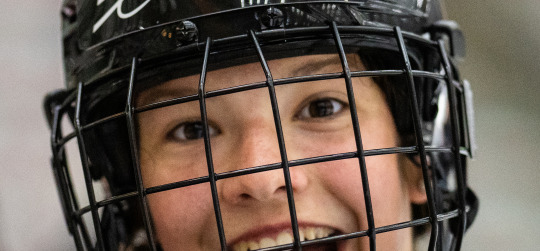
A closer look shows the AF locking onto the cage

White or light cages are equally problematic, and goalies have thicker and a greater number of bars to navigate
I'm sure this is also a common occurrence in football, lacrosse, and other events. This is where a pinpoint AF option would certainly help. Sony engineers are more than aware of the need, it is just a matter of implementing the solution.
Another situation ideal for pinpoint AF are jubilation and goalmouth photos. I always try to catch the athlete that is facing me rather than backs. Pinpoint AF would certainly beat a medium AF point in these cases.
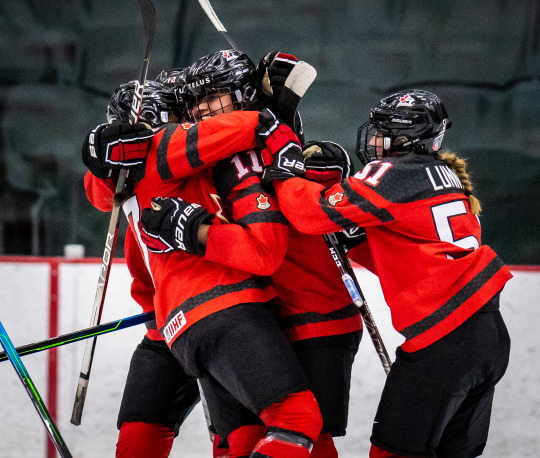
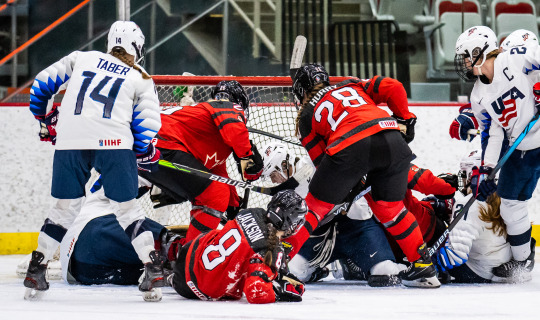
Situations like above would be ideal for instantly available pinpoint AF
Back to the dual AF-On buttons. These things happen fast and switching points quickly is key. Since I shoot manual, I have programmed my AEL button to focus point selector. I also reduce the number of focus point options to the two or three I regularly use. Still switching from a medium point to a small point takes more time than I usually have to get the shot. This is where dual AF buttons would be magical. One programmed for action (flexible medium AF, wide, tracking, etc) and one set to a pinpoint AF would be ideal. I would probably leave one AF-On button set to pinpoint most of the time.
One last thought -
Shooting high level events, most particularly the Olympics and Paralympics, we are prohibited from collecting any video, even on our phones, due to right-holder exclusivity. This renders all of the video capability in high end cameras virtually useless at these events.
What would be nice is a split in the A1 line at some point, with a video focused version (say the A1V) and a photo version (the A1P). The A1P would be heavily focused on photography usability and features, and this would be a go-to for full-time and Olympic/Paralympic sport photographers.
No video recording on the A1P means no need for the video on button means plenty of room for a second AF-On button. Maybe I should be asking for three AF-On buttons and a one-pixel AF point. Sony may just say, 'give him two AF back buttons and pinpoint AF, just to keep him quiet.' Let's hope lol.
2 notes
·
View notes
Text
Sony at the Beijing 2022 Olympic Games
Sony has come a long way in the past few years and they finally have equal footing in the main press centre at the Beijing 2022 Olympics.

Four years ago in PyeongChang, Sony was able to offer photographers the new a9 camera and a few lenses. They longest lens they had at the time was the 100-400mm. Sony had a presence at PyeongChang, but it was in a vacant retail spot close to the media village. They had limited capabilities there but were able to do clean and checks and small repairs.
Fast forward to Tokyo where Sony had a service depot in the main press centre but off in a corner. In the three years since PyeongChang, Sony had come out with two new bodies (the a9II and the a1) as well as a 400mm and a 600mm.
Finally in Beijing, Sony is side by side with Canon and Nikon in plain view of everyone at the MPC. They also have a service depot up in the mountains at the Zhangjiakou press centre.
Sony is again offering the usual clean and checks, firmware updates, and trouble shooting. Wifi and ftp connections can be tricky sometimes so technical help is available. Small repairs are available and parts that I lose all the time (hot shoe covers, eye cups, etc) are readily replaced.

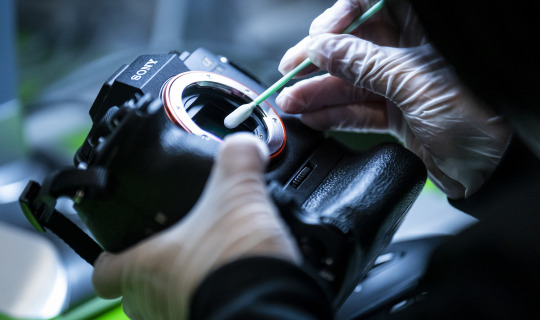


There is also a bounty of gear waiting to be used during the Games. Almost anything you want to try for sport photography is available for use. It's quite something to see the sheer quantity of the best products available anywhere.
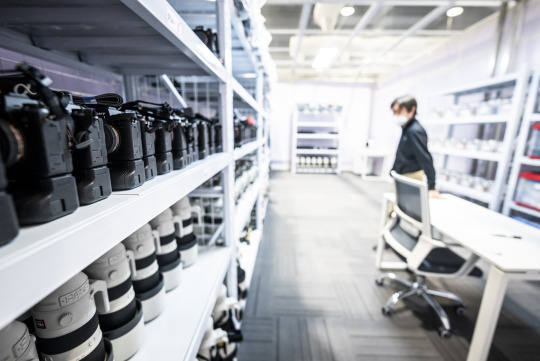
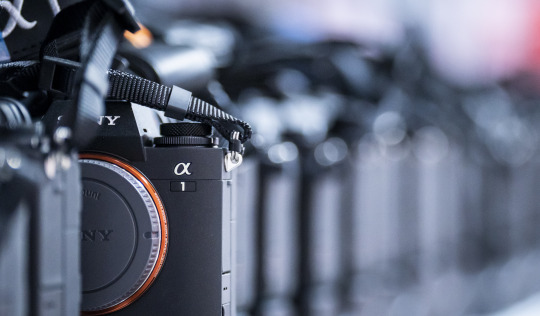
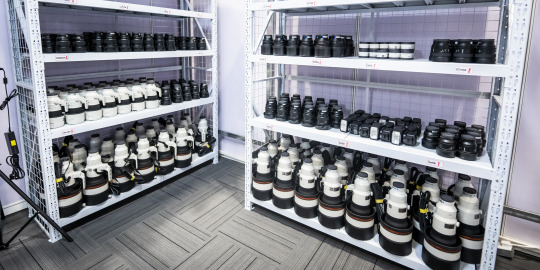
As always it is the people that make this happen. If you are at the Games, drop by and say hello. Tom Liang and Takuya Daishin will hook you up!
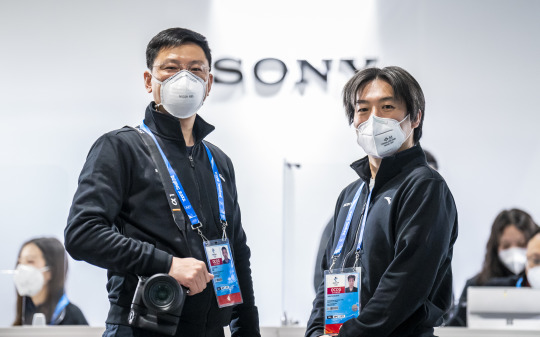
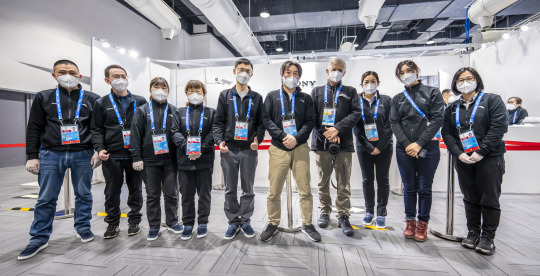
3 notes
·
View notes
Text
My Manual Shooting Setup for the Sony Alpha One
I shoot manual 100% of the time, except for autofocus - nothing is beating the built in capabilities.
Shooting manual opens up many more button options for customizing your camera setup. Here is how I’ve set my Sony a1 for shooting the Olympics in Tokyo:
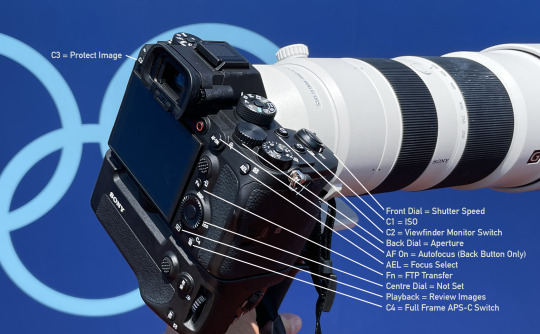
Front dial - I have this set to shutter speed. When I switched from Canon, this is where it was on my 1DxII so I just stuck with it
C1 - I have this set to ISO for quick adjustments
C2 - This I have set to Monitor Viewfinder Switch. I normally have it set to auto switch but sometimes outside on bright sunny days, and while wearing sunglasses, it can switch when you don’t want it to so this button is a quick fix
C3 - Image protect for those you want to load into photomechanical first
Back Dial - This is set to Aperture, as it was with Canon. Muscle memory
AF ON - I only use back button focus so this stays as is. It is a nice big button that is easy to use with gloves in the winter
AEL - Shooting manual frees up this button. I use it for switching between autofocus modes. I’ve limited my modes to just three focus areas instead of the whole suite: Wide, Expand Spot, Tracking Spot. Just the basics. I can always add if needed
Fn - in playback mode I have this set to FTP Transfer (This Image) for quick filing from anywhere in the venue. Wifi is remarkably good so far
Centre Dial - I really don’t have this set to anything. It helps scroll through ISO faster but that’s it
Playback - Just that. Image review
C4 - I have this set to switch between Full Frame and APS-C sensor size. With the aI you can still get large enough files with APS-C and I find dialing in focus points easier in this mode sometimes. I tried this set to the focus hold button on the lens but found myself searching for it too much
That is pretty much it. Your exposure triangle is all within an inch for quick changes, and everything else that needs changing quickly to keep up with the action. Give it a try.
0 notes
Text
Sony Pro Services at Tokyo 2020
For the first time ever Sony has a pro services booth at the Main Press Centre at Tokyo Big Sight. Canon and Nikon have always been present at the Games, but the great strides made by Sony since the PyeongChang Olympics have solidified their position in the game.
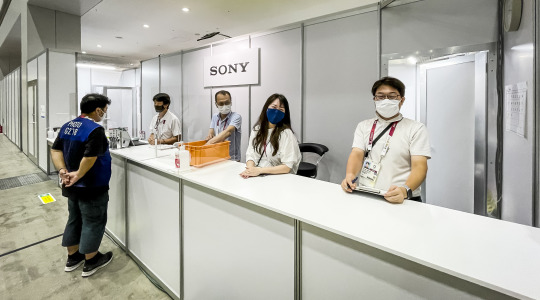
Sony was at PyeongChang but they were at an office near the media village. I had the chance to visit them one for a small repair and the service was great then. Not being in the MPC has its limitations though, especially as the media village wasn’t in operation for the PyeongChang Paralympics, so nobody could really use it.
I was one of a handful of photographers using Sony in PyeongChang. The longest lens they had at the time was the 100-400mm 4.5-5.6 which was great but it is an outdoor lens, even with good Olympic lighting. The most current camera was the a9.
Since PyeongChang Sony has introduce the a9II and the aI cameras, as well as the 400mm 2.8, the 600mm 4.0 and the 200-600 5.6-6.3, all brilliant lenses. The 400 is my indoor lens of choice and the 200-600 I’ll use outdoor most of the time. Both are excellent lenses. I particularly like the 200-600 for winter events like halfpipe, moguls and ski cross.
I managed to get a sneak inside Sony Pro Services at the MPC and it didn’t disappoint.

All of this is available to borrow. I couldn’t begin to calculate the dollar value of everything in here. My kind of tickle trunk.

200-600s, 400s, 600s, whatever you need to borrow is there. For a little while at least. Demand will be higher and generally it is first come, first served. Thankfully I don’t need to borrow much as I came with everything I need, but it is nice to know that this is available if something happens.

You’ll notice on this shelf is the brand new 14mm 1.8. I have one of the few copies of this lens and it is amazing. If there were two lenses I would live my photo life with it would be the 14mm and the 400mm.

I brought my camera bodies in for a customary ‘clean and check’, just to make sure there isn’t any dust on the sensor and everything is just so. I also got firmware updates to pretty much all of my cameras. All of this is provided free of charge to members of the press.
Sony is also set up for remote help if people can’t make it in to the MPC or prefer to be distanced.

Make sure you drop by and say hi to the gang. They are always welcoming and eager to help!
1 note
·
View note
Text
My Sony Tokyo Gear
Most of you know I have been a Sony convert going back to just before the PyeongChang Olympic and Paralympic Games. I’m now fully Sony (save for one Canon fisheye and a Sigma MC-11) for the Tokyo Olympics and Paralympics.
Why the switch? The equipment is better in my hands than Canon ever was. I get way more keepers and at the end of the day that is all that matters. Files I find are crisper, form factor smaller and lighter.
Another important factor is Sony Pro services and the Sony staff in Canada and around the world. They have exceeded my expectations at every turn.

This is what I have for the Games in Tokyo. Almost all of this is mine. I have a Sony a1 loaner from Sony Canada, as well as the 70-200mm 2.8 (mine needs a repair) and the two teleconverts.
Five lenses, five bodies, two converters and the RX0 II just in case I need something small and waterproof. About average for an Olympic photographer. Some will have more especially if they are doing remote cameras, some will have less. If I’m not doing remotes I’ll generally have three bodies with me and three or four lenses depending on the venues I’ll be visiting on any given day.
The a1 bodies are amazing. 50 megapixel sensors for nice large files. I will frequently switch to APS-C format to get extra reach, but I’ll still have more than enough file size to work with.
The a7III, a9 and a9II were my first three bodies and they have their own charm. It’s always a good idea to have extra bodies.
The 400mm 2.8 is a lens I can’t live without. Perfect low light performance and tracking. This will be my primary indoor lens. I may use a converter with it if needed for reach. This will depend on how the photo positions shake out.
the 200-600mm 5.6-6.3 is definitely an outdoor lens even with the better than usual lighting of the Olympics. Using APS-C sensor size give a reach of 300-900mm. Can’t beat that.
The 70-200mm is one of my least used lenses at the Winter Olympics. Nice lens but it doesn’t have the reach for most events. I figure it will be good for wrestling, fencing and a few other sports here, depending on the photo positions.
Just got them all cleaned, checked and updated for firmware at the Sony booth in the main press centre. Always so helpful.
0 notes
Text
When Snow isn’t just Snow
If you shoot winter sports you will eventually get to a ski hill. And whether it is a freestyle event or alpine or cross country racing, a lot of effort goes into preparing and maintaining the tracks for world class competition.
Athletes generally like an icy track. One common way of keeping a course solid is to use salt, which melts snow and helps turn it into ice. Salt is so commonly used that FIS has published guidelines for the salting of courses.
https://assets.fis-ski.com/image/upload/v1536833183/fis-prod/assets/Guidelines_for_Salting_of_Ski_Courses_Cross-Country.pdf
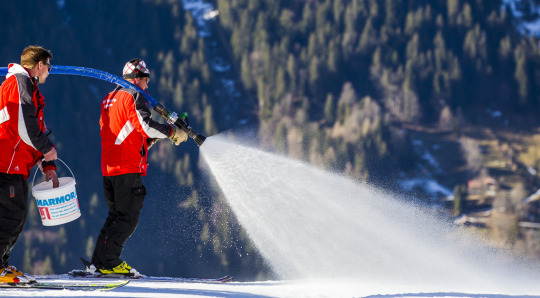
The image above shows course preparation for the slalom event in Wengen. Buckets of salt get used.

Another option for keeping jumps intact is fertilizer, which was used above on the jumps at the moguls World Cup. Add to this spray paint, dyes, and whatever leaks out of cats and snowmobiles and you can get quite a cocktail of chemicals in the snow. I wouldn’t use it in margaritas unless you are desperate.
You can see why it is important that you take extra care of your gear. You WILL get snow on it so make sure you clean your cameras and lenses after events.
I often use remotes under jumps and can get great results, so it is worth the effort.
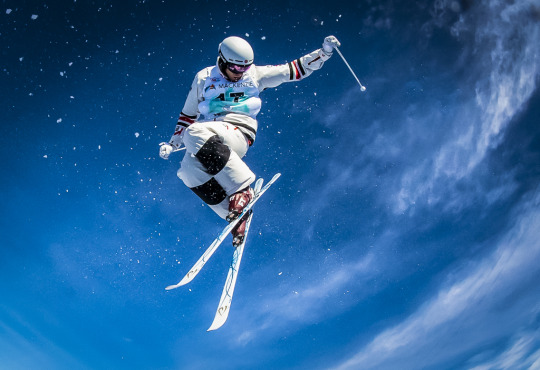
However you won’t have many chances to protect or clean as you go so your lenses can end up looking like this:

I neglected to dry my lens after using it so the next day I had a nice layer of salt, fertilizer and whatever else was in the snow. That was just a few drops. I’m not sure if that will get through lens coatings or not.
Filters are rarely an option either with ultra-wide lenses, so you have to be diligent.
Even if you are careful accidents can happen. This photo was the result of an exuberant athlete at the finish. Not sure what kind of cocktail makes those colours.
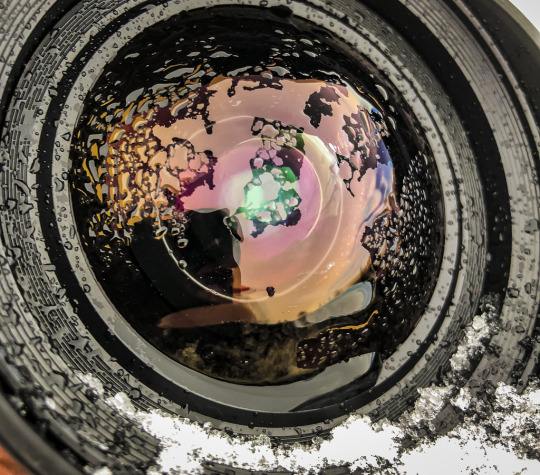
Working with cold fingers resulted in me hitting the lens release button and having my a9II fall into the snow.
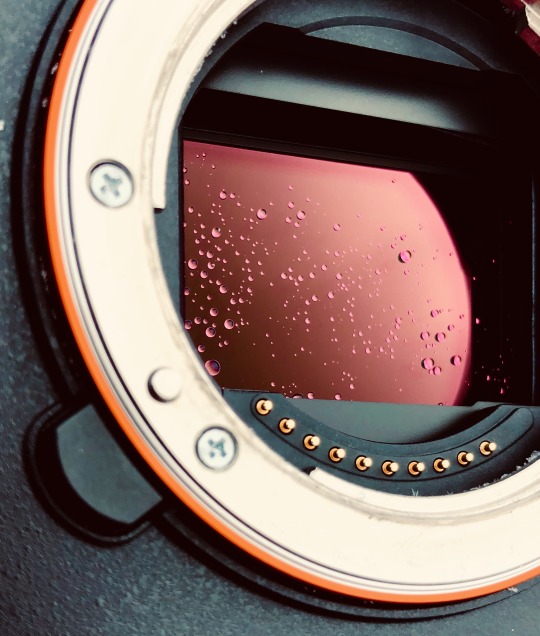
I recommend using a damp clean cloth to wipe down your lenses and bodies to start. This includes getting gunk off of your lens. If you still have anything on your lens element after this initial cleaning, use a Zeiss lens wipe or something similar. To get the water off of my sensor I just used a clean dry lens cloth.
Long story short, when you get off the hill, take some time to clean your gear. It wasn’t designed for chemicals. Also consider bringing a small towel to keep your gear off of the snow. I usually have something like a Gatorade towel just to put on the ground.
#Sony#Lens#Snowsport#Snowsports#Ski#Skiing#Freestyle#Sports#Sportsphotography#Sportphotography#Salt#Cleaning#Maintenance
0 notes
Text
My First Follow Friday
I can guarantee you that I won’t be doing this every Friday but I wanted to give a shout out to these esteemed photographers, most of whom I met for the first time, at a top secret Sony product test.
The end result of this semi-clandestine meeting was this Sony a9II video that accompanied the launch of the new flagship camera. We were brought together by Sony’s Nick Didlick and produced by Bob Frid. The visuals were put together by Michael Atlan of Blue Pixel Creates.
Here is the gang:
Jean Fruth; La Vida Baseball
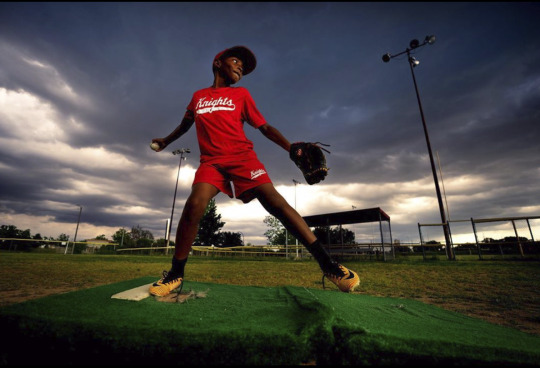
Abbie Parr; Seattle Sports Maven

Jeff Bottari; Vegas Golden Nights and UFC

John Todd; San Francisco Sport and Commercial

Bob Frid; UBC and Beyond

Michael Atlan; Blue Pixel Creates

Nick Didlick; The Ringleader
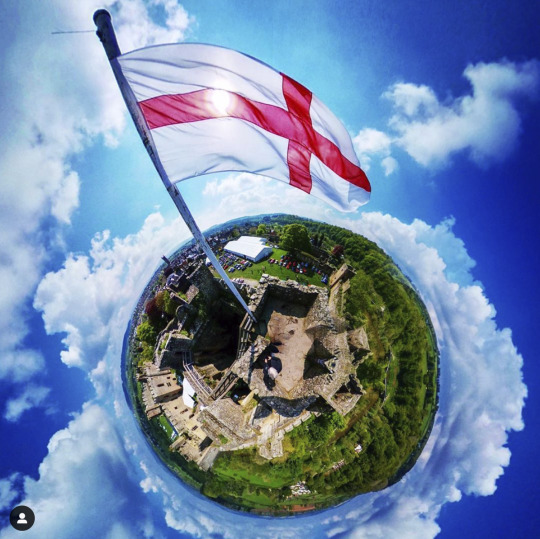
0 notes
Text
Getting Extra Reach from your Sony G/GM Lenses and your a7III/a9
Sometimes in sports photography if feels like you can never get close enough to the action for the shot you want. I often like to shoot as tight as I can to draw people into the action of the photo.
There is a cool trick you can use with your Sony Alpha and your G/GM lenses to get you extra reach when you really need it. The trick is to customize the Focus Hold button on your lens.

The little button on the side of the lens is often overlooked by photographers but it can hold the key to getting tighter shots quickly and easily. This Focus Hold button can be customized in your camera menus to switch from Super-35 (full frame) to APS-C. Once you customize this button to this feature, a simple push of the button will switch instantly from one format to another. To get back to the first format, push the button again. This will effectively multiply your focal length but 1.5x (the ‘crop factor’ of an APS-C sensor) and you will see the extra reach you get in the viewfinder.
As with most things in photography there is give and take. With this trick you get extra reach without losing any light or f-stop, but you lose file size. The image resolution drops from 6000x4000 to 3936x2624. Basically you lose 1/3 of your resolution but get 1.5x reach out of your lens. If you are displaying your images online a 3936 pixel image is plenty of resolution.

This is Kristen a bobsledder that trains at the Canadian Sport Institute Calgary. This image was shot with the Sony a7III and the 100-400 GM lens (1/250 sec at f/5.0, ISO 3200 and 160mm).

This image shows the drop in resolution while the lens setting remain the same. The focal length is displayed as 160mm instead of 240mm.

After cropping and editing, the final image size is 2780x1745. There is still nice bokeh behind her and the photo is tack sharp.
Give this a try. The Focus Hold button is usually close to your thumb making it a quick switch. No muss, no fuss looking for buttons and through menus.
#sportphotography#sportsphotography#olympicsports#athletes#training#quicktip#sonygmaster#sonya9#sonyalpha
0 notes
Text
Sony Alpha a9 AF Tips and Tricks for Olympic Sports
The autofocus systems in the Sony a9 are ridiculous good. I’ve recently talked with other photographers about the AF system reliability and we all tend to agree on one thing: it feels like cheating. It’s that good.
There are many options available to photographers to customize the AF settings but in reality I rarely change much with my preferred setup. Below are my typical AF setting. If you want more information about specific sport settings Sony’s ILCE-Focus Setting Guide is available here.
Set-it-and-forget-it:
AF-C: Continuous AF.
Priority Set in AF-C: Balanced.
Switch V/H AF Area: AF Point Only.
Set-it-and-forget-it (most of the time):
AF Track Sensitivity: 3. Occasionally I’ll want more control locking onto a subject when there may be objects or people passing in front of them. Then I’ll set the sensitivity to 1 or 2 to lock on better. Think of one athlete in a pack, like in triathlon. I generally never use sensitivity of 4 or 5 because I don’t want the focus jumping around when I am trying to focus on one athlete or particular action.
Face/Eye AF Set: On. There are times when it won’t help you much, mostly when people are wearing helmets and cages. I will still leave it on as I’ve found it doesn’t appear to hamper other AF operations.
Set-it-but-play-with-it:
Focus Area. This changes all of the time as I jump from one sport to another almost daily. I really like the tracking AF mode mostly because I like the ‘angry bees’ (the little green squares that lock onto subjects like a swarm). I’ve found this to be quite reliable with remote cameras as well. Basic rule of thumb for me is the more congested the action the smaller the focus point, and the more the obstacles, the more inclined I am to use tracking AF.
Here are a few tips to help you get better shots:
Turn AF off on your shutter button and use what is called ‘back button focus’. This is the AF-ON button. You will no longer use AF capability from half-pressing the shutter button, instead switching to an exclusive button operated with your thumb. This was one of the best tricks I was taught over a decade ago. It may take time to get used to but it is a valuable switch. There are times when you want to keep focus on a single point and take pictures without the focus plane changing. Simply focus on the point you want and release the AF-ON button. That point will remain in focus even as you take photos. I rarely need to do this anymore because the Sony AF is so good but sometimes it is handy.
One situation where I used this was at the Pyeongchang Olympics for skeleton. I had a tight spot where I could get my camera onto one corner where I knew the athletes would have some height in the track. There was only a meter or two on the track where the shot would be clean. You couldn’t see them coming, but you could hear them. I prefocused on one point and shot as they went through the corner. The athlete will pass through the prefocus focal plans and you’ll get one or two in focus. This will guarantee you get the shot.

The AF-ON back button on the new a9II is larger and more prominent that on the a9. This will be really helpful with shooting winter sports while wearing mitts or gloves. See it in the photo below, poached from alphauniverse.com.
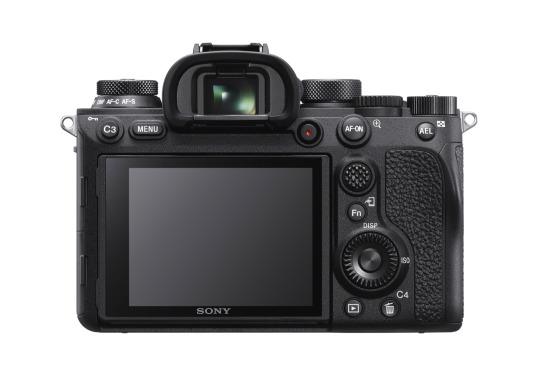
To the right of the AF-ON button is the AEL button. This locks exposure when you are shooting in one of the auto modes and you recompose your shot to a darker or brighter scene (ideal for creating panoramas). Since I shoot in manual mode 100% of the time, this isn’t really a helpful function for me so the AEL button is available to be set as a custom key. I usually use it as a second AF function and often have it set to switch Eye AF from left to right. It helps quickly to shift the focus to the eye you want.
Most of the time it is the closest eye but occasionally I’ll want to switch to the other eye. This example of Ivanie Blondin is a good example of switching from the closest eye.
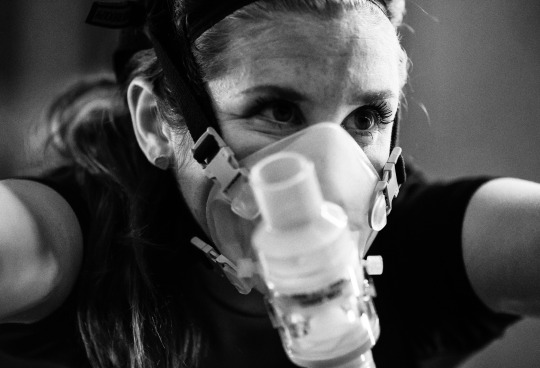
One last tip that has saved me a few times. Set your MF Assist to ON. Though I rarely use manual focus, I leave MF Assist set to ON. I use this simply as a warning that I may have turned AF off on the lens accidentally. If you mistakenly turned AF off on your long lenses and you try and focus, the scene will magnify on your viewfinder and will cue you to turn your AF back on.
0 notes
Text
Under the Knife (Graphic Images)
A stark reality for high performance athletes is injury and the need for surgery. It seems to be only a matter of time before an alpine skier need an ACL repair.
I was fortunate to cross paths with whitewater canoeist and Tokyo 2020 Haley Daniels. Asking what’s new, she said she was getting her shoulder fixed in a couple of weeks. I asked if I could come, and she said yes. A couple of emails later I was gowning up for surgery at the Banff Mineral Springs Hospital with Haley and orthopaedic surgeon Dr. Kopka.
Finn Young is a freestyle skier who destroyed his ACL a few months after Haley’s surgery, so I asked if I could join to document the procedure and add to my collection of surgery images and video. He also agreed, and I got to witness Dr. Mark Heard perform his ACL magic. Scars from his procedures can be found on an athlete pretty much any given day in the Canadian Sport Institute Calgary training centre.
One nice thing about my Sony a9 and a7IIIs is the ability to shoot both in silent mode, allowing the surgical teams to work without the sound of shutters distracting them.

Minutes before surgery Haley Daniels was still assessing her options. A worst case scenario might cost her an opportunity to qualify for Tokyo, the first time women’s whitewater canoe will be a medal event in the summer Olympics.
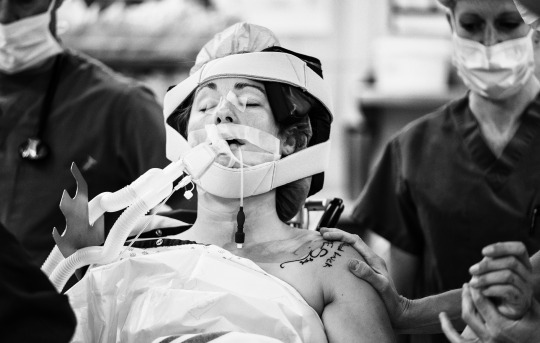


Haley’s surgery included the removal of bone fragments from her clavicle to allow for freer movement in her shoulder.

Getting set for anesthesia on the correct leg, as indicated by Finn’s YES and Dr. Heard’s initials.



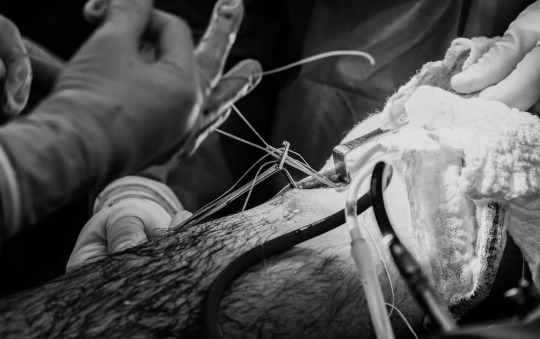


Finn’s knee and Haley’s shoulder required months of rehab and attention from physiotherapists, but both have made great recoveries and are ready to go.
Thanks to Haley and Finn, Drs. Kopka and Heard, their staff and the folks at the Banff Mineral Springs Hospital for allowing me to document the reality of the procedures more athletes than you can imagine go through.
0 notes
Text
Sony a9 II First Impressions
I was fortunate to get a call from Sony to head to Vancouver to try out the new Sony Alpha 9 MkII. Sony lined up a stadium and a few athletes for us to test out some of the new capabilities of the camera. Um, ya! We had a beautiful day and some amazing UBC athletes to work with.
Here is the result of the work we did in Vancouver (second video ;) ):
https://alphauniverse.com/stories/sony-announces-alpha-9-ii-with-enhanced-connectivity-and-workflow-for-professional-sports-photographers-and-photojournalists/
I already use the Sony a9 MkI so I am very familiar with the camera. Menus are pretty much the same so customizing it was easy. I’m a 100% manual exposure shooter so settings are simple. ISO, shutter speed and aperture. A few other setting and ready to go. Easy.
I am however a 98% autofocus shooter (some remote camera installations call for manual focus). Sony’s autofocus can’t be beaten by a human at 20 fps. I did notice some new modes in Tracking AF (what I call ‘angry bees’ mode). Welcome additions.
The a9 MkI is an amazing camera so the a9 MkII delivered everything that I expect from the camera. Lightning quick autofocus, no blackout viewing and particular crispness of the files.

Sony a9 MkII with the 12-24mm. Autofocus worked amazingly.

This image was captured using the a9 MkII with the 12-24mm as a remote on Tracking: Wide mode. Worked flawlessly.

This photo of Gigi was made with the a9 MkII and my new Sony 200-600mm. I was really impressed with the image quality from the lens. This was the first time I’d used it.
I use Lightroom as my primary editing software and because the raw files from this camera obviously aren’t supported yet, I tried out Sony’s Edit software. The .ARW files opened in Edit and I was able to export as JPEGs and TIFFs.
Things I am looking forward to using on the Sony alpha 9 MkII when I actually own one:
Improved Ergonomics: I cover a lot of winter sports so an enlarged grip, a bigger AF-ON button and a more tactile joystick are welcome improvements for working with gloves on.
Voice Tagging: While working with the Canadian Olympic Committee at the Pan Am Games in Lima, Peru, we sent images via ftp to an editor. One problem was consistently identifying athletes. This will be a great help in speeding up the process for everyone.
USB-C Port: I haven’t tried this out but I understand that this can be used for power into the camera. I’ve installed overhead and time-lapse remotes where this will be a great benefit. It’s the same cable as I use with my MacBook so I have spares. No redundant cables.
Mechanical Shutter 10 FPS: I work in a lot of environments that have flickering lights. The anti-flicker mode works great but only with a mechanical shutter. Doubling the fps from 5-10 is a huge help.
Bottom line for me is the camera is everything I expect from the Sony a9 line. Lots of welcome additions have been made simply by listening to photographers. Excited to get one or two for Tokyo 2020.
0 notes
Text
Shooting Sports without Shooting the Sport
Competing is what athletes train for and all most people will ever see them do. Yet there is so much more to sport than just competition. There are hours and hours of training, preparation and recovery that can go into a minute or two of racing.
Such is the case with speed skating. I’ve always wanted to shoot speed skating without shooting any action so I decided to use a recent time trial to do just that. Time trials are an opportunity for athletes to skate official times that may earn them the required times to enter competitions.
Shooting anything but action will give you an opportunity to really see what goes on around the races. If you want to do this here are a few tips:
Show up early and stay late. I was two hours early for racing and athletes were already warming up.
Respect space, especially ahead of races. Most athletes are ok with having you around and close pre-race but usually don’t want to talk to you, especially if they don’t know you and have headphones on.
Look for different angles and locations that are not available during competitions. The higher the level of event the more restricted the access. Use the opportunity to try different things.
Be patient and wait for the shot you want. You have more time to do that than you think.
I used only the Sony a9 with the 400mm 2.8 and the Sony a7III with the 12-24mm 4.0. These images were shot between Iso 6400 and 12800. Much like access, the higher the level of racing, the better the lighting.

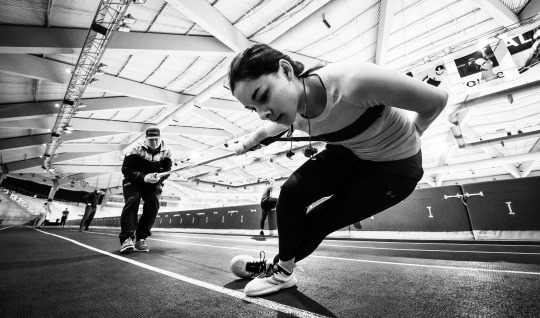


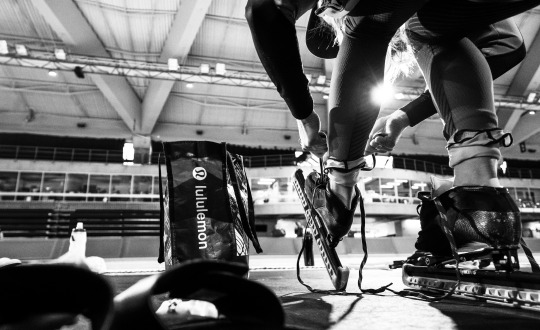




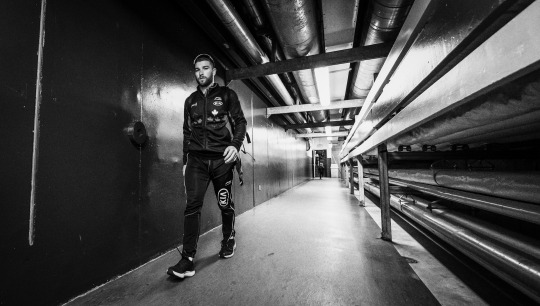

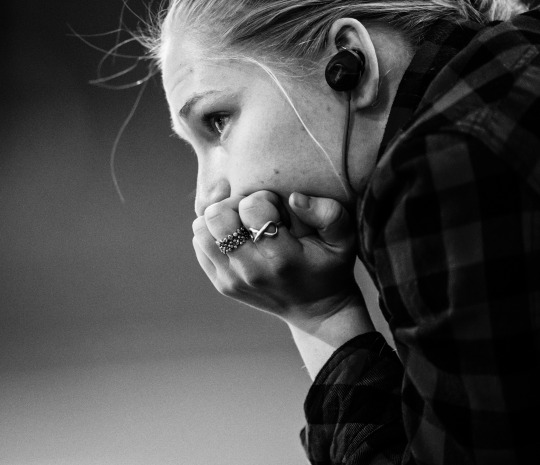
1 note
·
View note